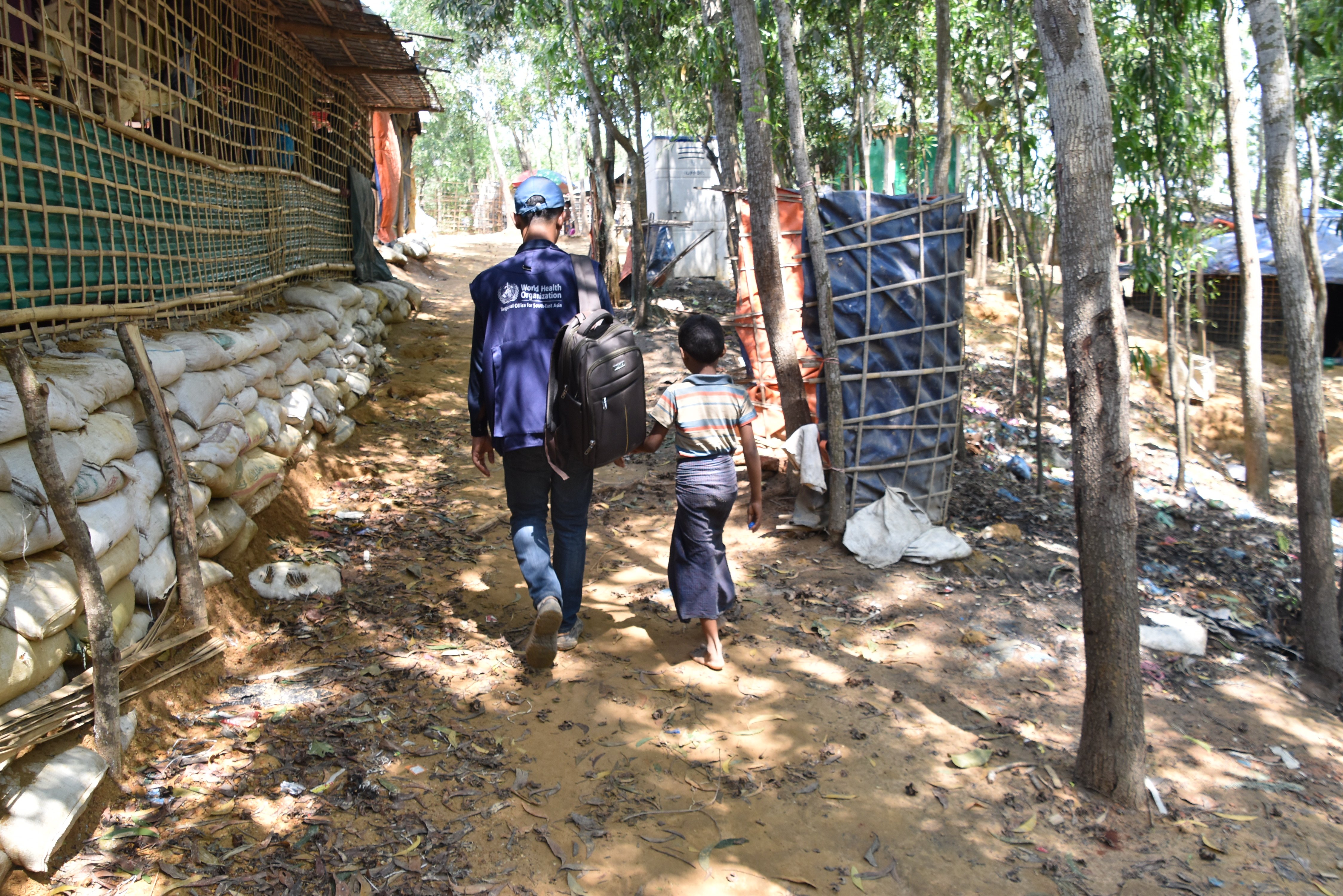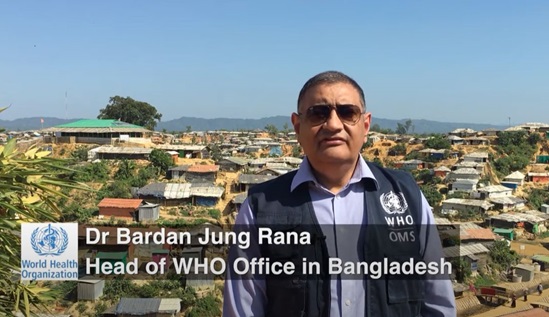

Bangladesh - Rohingya Crisis
Responding to health needs of vulnerable population
Since 25 August 2017, more than half a million people fled from Myanmar to the Cox’s Bazar district of Bangladesh. Most settled in makeshift or spontaneous camps, where living conditions are extremely difficult. Poor nutrition, communicable diseases, including vaccine-preventable and waterborne infections, injuries, and mental health issues pose significant public health risks that the Ministry of Health and Family Welfare, WHO, and health partners are working to address.
Today, more than one million Rohingya refugees reside in the camps, making Cox’s Bazar the world’s largest refugee settlement. Although classified as a Grade 2 emergency, the Rohingya crisis required attention and resources equivalent to a Grade 3 response, given the ongoing risks of overcrowding and disease outbreaks, the urgent need for sustained donor support to maintain life-saving services, and its strategic importance in demonstrating WHO’s leadership in one of the world’s most protracted humanitarian crises.
WHO is working closely with IOM, UNFPA, UNICEF, and other health partners to ensure that vulnerable populations have continued access to essential health services.
Bulletins and Reports

WHO Cox’s Bazar Data Hub
/countries/bangladesh/who-coxs-bazar-data-hub.jpg?sfvrsn=faf985c7_3)

